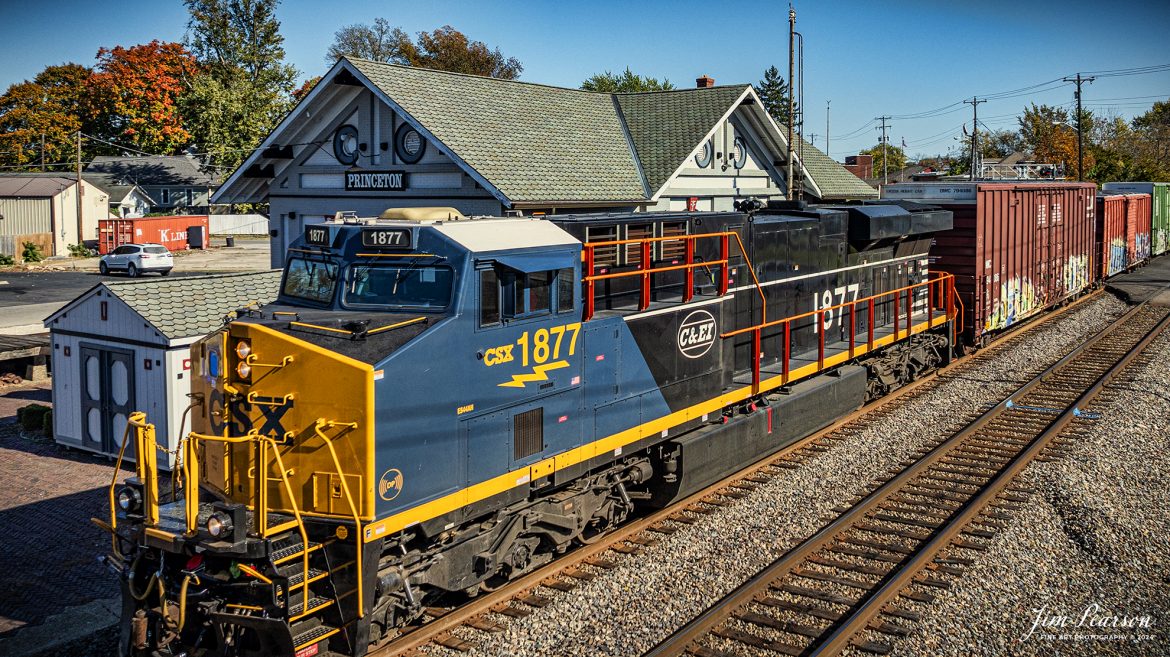CSXT 4758 leads W008 with two FRA inspection cars, DOTX 218 and DOTX 220 as they pass the grain facility at Hopkinsville, Kentucky on the CSX Henderson Subdivision, on November 20th, 2024.
From what I can find on the FRA Website, DOTX-218 is a Gage Restraint Measurement Vehicle and DOTX-220 Track Geometry Car.
DOTX 218 Gage Restraint Measurement System (GRMS) vehicle procured in May 2004, is a state-of-the-art deployable GRMS vehicle which utilizes a 5th split railroad axle to laterally load the head of both adjacent rails of railroad track in order to measure rail motion under a combined vertical and later load for the detection of weak ties and fasteners. It has a unique suspension system which maintains alignment and apply continuous loads perpendicular to the rails regardless of the roll, pitch or vertical movement of the carbody on its suspension, or the curvature of the track; lifts and lowers split axle for testing and stowage; and orients split axle so that wheels are tangent to rails as track curvature varies.
DOTX 220 measures track geometry parameters, i.e., track gage, alignment, track surface (cross level, warp, profile) and calculate limiting train speed in curves. Fully equipped with non-contact sensors, the TGMS computes track geometry parameters at speeds of up to 125 miles per hour. Data can be processed to 200 miles per hour.
Tech Info: DJI Mavic 3 Classic Drone, RAW, 24mm, f/5, 1/3200, ISO 100.





















